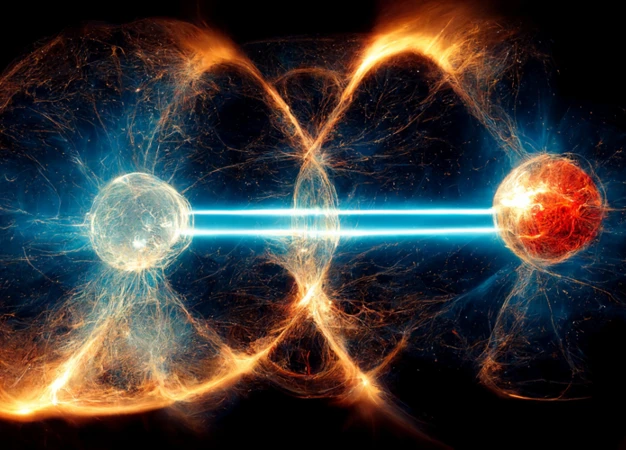Welcome to the mind-bending world of quantum entanglement! Prepare to have your understanding of the universe challenged as we delve into the strange and fascinating phenomenon that defies conventional logic. Quantum entanglement is a mind-boggling concept that involves the mysterious connection between particles, regardless of the distance between them. In this article, we will explore the intricacies of quantum entanglement, its applications, implications, and the exciting prospects it holds for the future. Brace yourself for a journey into the weird and wonderful realm of particle connections!
Contents
- Understanding Quantum Entanglement
- Entanglement in Action
- Applications and Implications
- The Role of Quantum Entanglement in the Universe
- Challenges and Mysteries
- The Future of Quantum Entanglement
- Conclusion
-
Frequently Asked Questions
- What is quantum entanglement?
- How does quantum entanglement work?
- Can quantum entanglement be explained by classical physics?
- What are the applications of quantum entanglement?
- Can entanglement be used for faster-than-light communication?
- What is the measurement problem related to quantum entanglement?
- Is quantum entanglement related to time travel?
- Can quantum entanglement be lost?
- Does quantum entanglement have any role in the origins of the universe?
- What advancements are being made in experimental techniques for studying quantum entanglement?
- References
-
Frequently Asked Questions
- How does quantum entanglement work?
- Is quantum entanglement a real phenomenon?
- What is the significance of quantum entanglement?
- Can quantum entanglement be explained by classical physics?
- Are there any practical applications of quantum entanglement?
- What is the relationship between quantum entanglement and quantum teleportation?
- Is it possible to use quantum entanglement for time travel?
- What is decoherence and how does it affect quantum entanglement?
- Can quantum entanglement be used to communicate faster than the speed of light?
- What are some open questions and mysteries surrounding quantum entanglement?
- References
- Read More
Understanding Quantum Entanglement
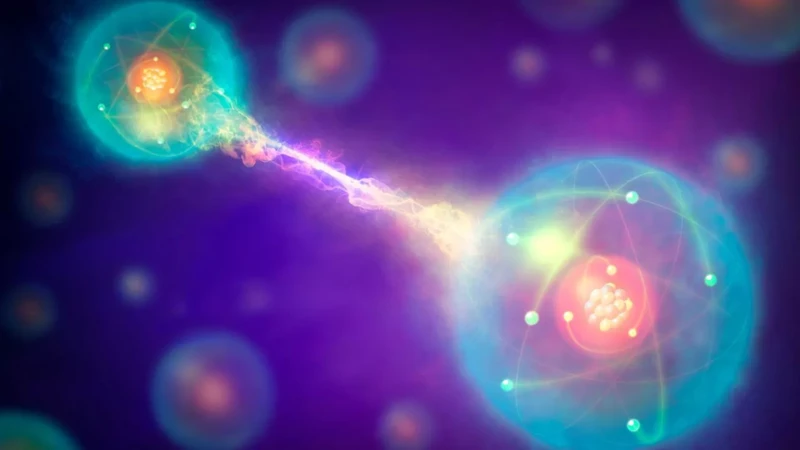
Quantum entanglement is a mind-bending concept that challenges the very foundations of our understanding of the universe. At its core, quantum entanglement refers to the peculiar connection that exists between particles, where their states become intertwined and entangled, regardless of the distance between them. This means that altering the state of one particle instantaneously affects the state of its entangled partner, even if they are light-years apart. This phenomenon is best explained through the concept of superposition, where particles can exist in multiple states simultaneously. It was famously described by Albert Einstein as “spooky action at a distance,” highlighting the mysterious and perplexing nature of entanglement. To understand this peculiar aspect of quantum physics, it is important to grasp the concept of quantum states and superposition, which heavily influence the behavior of entangled particles. In these states, particles exist in a state of uncertainty until they are observed or measured, at which point their wave function collapses into a definite value. The intricate and interconnected nature of quantum entanglement continues to captivate and puzzle scientists, leading to groundbreaking advancements in the field of quantum computing, secure communication, and even our understanding of the origins of the universe. It truly represents a glimpse into the enigmatic nature of the quantum world.
What is Quantum Entanglement?
Quantum entanglement is a fundamental concept in the field of quantum physics that continues to baffle scientists and push the boundaries of our understanding of reality. At its core, quantum entanglement refers to the peculiar correlation between particles, where their quantum states become intertwined in a way that the behavior of one particle is instantly dependent on the state of its entangled counterpart, regardless of the distance between them. This means that altering the properties of one entangled particle will have an immediate impact on the properties of the other particle, even if they are separated by vast distances in space.
This phenomenon of instantaneous communication between entangled particles, dubbed “spooky action at a distance” by Einstein, is one of the key aspects that makes quantum entanglement so perplexing and mysterious. The entangled particles have a shared wave function that describes their combined states, and until one particle is observed or measured, their states exist in a superposition, meaning they can be in multiple states simultaneously. Once measured, the wave function collapses, and the particle’s state becomes definite.
The nature of quantum entanglement challenges our classical understanding of causality and locality, as the entangled particles seem to exhibit a form of non-locality, where their actions are seemingly connected instantaneously, regardless of the physical distance separating them. This concept played a significant role in the debates between Einstein and his contemporaries in the early days of quantum theory.
The intricate relationship of entangled particles can be utilized for various applications, including quantum teleportation, quantum cryptography, and quantum computing. The understanding and manipulation of quantum entanglement hold great potential for revolutionizing fields such as secure communication, information processing, and even our understanding of the origins of the universe.
Quantum entanglement is a perplexing and intriguing phenomenon in which the quantum states of particles become entwined, leading to instantaneous correlations between them, regardless of distance. This mysterious property challenges our intuitive understanding of reality and has far-reaching implications in the fields of science and technology. Exploring the depths of quantum entanglement continues to unlock new possibilities and expand our knowledge of the fundamental workings of the universe.
Einstein’s ‘Spooky Action at a Distance’
Einstein’s ‘Spooky Action at a Distance’ refers to his skepticism and fascination with the concept of quantum entanglement. Einstein famously described the phenomenon as “spooky” due to its instantaneous and seemingly inexplicable connection between entangled particles, even when they are separated by vast distances. Einstein’s skepticism stemmed from his belief in locality, the idea that any influences between objects can only occur through direct physical interactions. However, quantum entanglement challenged this notion by suggesting that particles could be connected on a fundamental level, transcending the limitations of space and time.
To illustrate the concept, imagine two entangled particles, each with their own intrinsic properties. According to quantum mechanics, these particles are in a superposition of states, meaning they exist in a combination of all possible states until they are observed. When one of the particles is measured or observed, its wave function collapses, instantly determining its state. What makes entanglement intriguing is that the collapse of one particle’s wave function is correlated with the collapse of the other particle’s wave function, regardless of their separation.
This non-local correlation between entangled particles intrigued Einstein, who famously referred to it as “spooky action at a distance.” He proposed that there must be some hidden variables, yet to be discovered, that could explain this phenomenon in a way that is consistent with locality. However, subsequent experiments, such as the Bell Test experiments, have consistently supported the predictions of quantum mechanics and challenged the idea of local realism.
Einstein’s skepticism and his interchange with other prominent physicists, particularly Niels Bohr, contributed to the development of quantum mechanics and the deeper understanding of entanglement. While Einstein may have been skeptical about the nature of quantum entanglement, its empirical evidence and the subsequent advancements in the field have solidified its existence as one of the most intriguing and perplexing aspects of quantum physics.
Quantum States and Superposition
Quantum states and superposition play a crucial role in understanding the perplexing phenomenon of quantum entanglement. Quantum states refer to the various possible values that a particle can possess, such as its position, momentum, or spin. However, what sets quantum states apart is their ability to exist in a superposition, where they can simultaneously occupy multiple states at once. This means that a particle can exist in a state of uncertainty, where it is both in one state and another until it is observed or measured. This concept challenges our classical intuition, which assumes that objects have definite properties at all times. Instead, in the quantum realm, particles can exist in a mixture of states until a measurement collapses the wave function and determines a single value. This idea was famously expressed by the thought experiment known as Schrödinger’s cat, where a cat can exist in a superposition of being simultaneously alive and dead until observed.
The understanding of quantum states and superposition is crucial for comprehending entanglement. When two particles become entangled, their individual quantum states merge into a combined state, which cannot be described independently. This means that the state of one particle cannot be fully understood without considering the state of its entangled partner. The entangled particles share a connection that transcends traditional notions of distance and communication. Altering the state of one particle instantaneously affects the state of the other particle, regardless of the physical separation between them. This phenomenon has been repeatedly demonstrated through experiments such as the Bell Test, providing empirical evidence for the existence of quantum entanglement.
The concept of superposition and the entanglement of quantum states have revolutionized fields such as quantum computing and cryptography. By exploiting the power of superposition, quantum computers are capable of performing calculations at an exponentially faster rate compared to classical computers. This has enormous implications for solving complex problems in areas such as cryptography, optimization, and drug discovery. Quantum communication protocols also leverage the entanglement of quantum states to provide unprecedented levels of security in transmitting information. The ability to detect any unauthorized interception or tampering, known as quantum key distribution, relies on the principle of entangled particles changing their state if observed by an eavesdropper.
The study of quantum states and superposition not only sheds light on practical applications but also deepens our understanding of the fundamental nature of reality. It challenges classical notions of determinism and highlights the inherently probabilistic nature of quantum mechanics. This insight has sparked debates and philosophical inquiries into the nature of consciousness, free will, and the relationship between the observer and the observed. While much remains to be uncovered and understood, quantum states and superposition continue to captivate scientists, pushing the boundaries of our knowledge and opening up new possibilities for the future of technology and our understanding of the universe.
Entanglement in Action
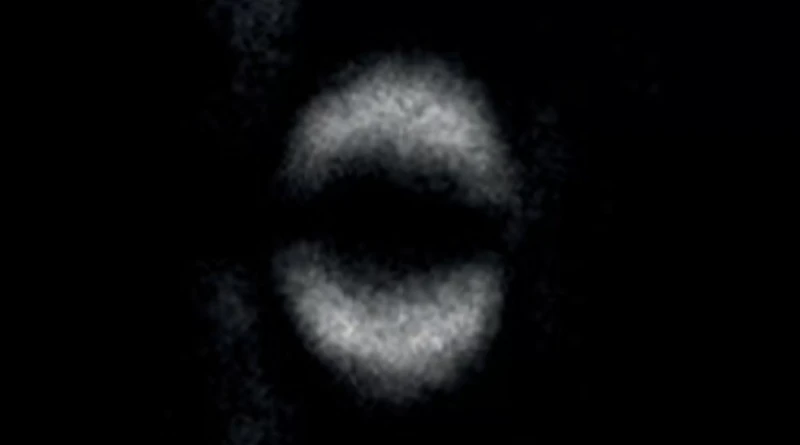
Quantum entanglement, the peculiar connection between particles, has far-reaching implications and has been proven through various experiments. One such experiment is the Bell Test, which confirmed the existence of entanglement and ruled out any local hidden variables that could explain the observed correlations between entangled particles. The outcomes of these tests showed that entangled particles remain connected regardless of the distance between them, instantaneously affecting each other’s states in a manner that defies classical physics. This characteristic of entanglement has also paved the way for remarkable applications such as quantum teleportation and quantum cryptography. Quantum teleportation allows for the transfer of quantum information from one location to another by leveraging the entangled properties of particles. Quantum cryptography utilizes the principles of entanglement to create secure communication channels that are highly resistant to eavesdropping. These practical applications highlight the profound impact that quantum entanglement has on various fields such as information technology and encryption. As we continue to explore and harness the power of entanglement, the possibilities for technological advancements are truly astonishing.
The Bell Test Experiments
The Bell Test experiments have played a crucial role in confirming the curious nature of quantum entanglement. These experiments were inspired by physicist John Bell’s groundbreaking work in the 1960s, where he proposed a set of tests known as Bell’s inequalities. The purpose of these tests was to determine whether the correlations predicted by quantum mechanics could be explained by local hidden variables. In other words, could there be some underlying explanation for the entangled particles’ behavior that we were missing? The results of the Bell Test experiments have repeatedly defied the predictions of local hidden variables theories and instead supported the peculiar predictions of quantum mechanics. One such experiment, conducted by Alain Aspect in the 1980s, involved entangling pairs of particles and separating them over large distances. The measurements performed on these particles were found to be correlated in a way that defied any local explanation, confirming the existence of entanglement beyond any doubts. These experiments have provided strong evidence for the strange and non-local nature of quantum entanglement but have also opened up new questions and areas of exploration in the field of quantum physics. They continue to inspire further research and fuel our curiosity about the fundamental properties of the universe.
Quantum Teleportation and Cryptography
Quantum teleportation and cryptography are two fascinating applications that stem from the mind-bending phenomenon of quantum entanglement. Quantum teleportation, contrary to what it may sound like, does not involve physically moving particles from one place to another. Instead, it relies on the manipulation of entangled particles to transfer the information of a quantum state from one location to another. This process involves three main components: an entangled pair of particles shared between the sender and receiver, a particle with the quantum state to be teleported, and classical communication channels to exchange information. By entangling the particle to be teleported with one half of the entangled pair, the sender can perform measurements on their half and communicate the results to the receiver through classical channels. The receiver can then apply particular operations to their half of the entangled pair, effectively recreating the quantum state of the particle being teleported. This process allows for the transfer of quantum information, which is crucial for the development of advanced quantum technologies.
Quantum cryptography, on the other hand, utilizes the principles of quantum entanglement to ensure secure communication channels. Traditional cryptographic methods rely on mathematical algorithms and keys to secure information, but quantum cryptography takes advantage of the laws of physics to achieve unconditional security. One example of quantum cryptography is quantum key distribution (QKD), which enables the exchange of encryption keys between two parties in a way that guarantees the detection of any attempted eavesdropping. This is possible due to the fundamental principle of quantum mechanics, which states that any attempt to observe or measure a quantum system will unavoidably disturb it. By encoding information onto particles and sending them through a quantum channel, any attempt to intercept or gain knowledge of the transmitted information would be immediately detected, ensuring the privacy of the communication.
These applications of quantum entanglement in teleportation and cryptography have immense potential in various fields. Quantum teleportation has the potential for revolutionizing secure communication and information transfer, especially in the development of quantum networks where teleporting quantum states between different nodes is crucial. Additionally, quantum cryptography offers the promise of unbreakable encryption, providing a secure foundation for sensitive communications such as financial transactions and government communications.
While these applications are still in their early stages of development and face technological challenges, they hold great promise for the future of quantum technologies. As scientists continue to unravel the mysteries of quantum entanglement and explore its potential applications, the possibilities for teleportation and secure communication are bound to expand, bringing us closer to a world of advanced quantum computing and communication systems.
Applications and Implications
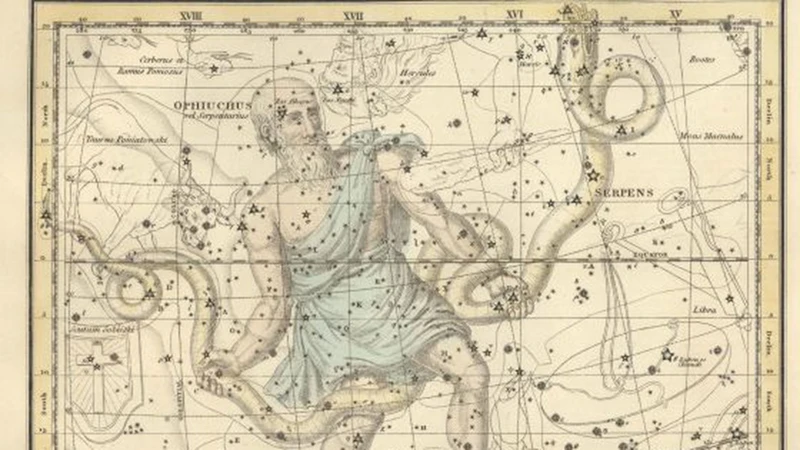
The mind-bending phenomenon of quantum entanglement has not only piqued the curiosity of scientists, but it also holds immense potential for practical applications. One such application is in the field of quantum computing, where entanglement allows for the creation of qubits that can process and store information simultaneously, offering unprecedented computational power. Additionally, quantum entanglement plays a crucial role in secure communication protocols, such as quantum cryptography, where the entangled particles are used to transmit encrypted information, making it virtually impossible for eavesdroppers to intercept or decode the message. These advancements in the field of quantum technologies have the potential to revolutionize various industries, ranging from cybersecurity to data processing. The implications of quantum entanglement reach far beyond technological applications. The interconnected nature of entangled particles challenges our understanding of reality, suggesting a fundamental interconnectedness at the quantum level. It raises profound philosophical questions about the nature of existence, consciousness, and our place in the universe. The mysteries and possibilities of quantum entanglement continue to unfold, offering a glimpse into the fascinating and perplexing realm of quantum physics.
Quantum Computing
Quantum computing is a field that has the potential to revolutionize the way we process information and solve complex problems. Unlike classical computers that use bits to represent information as either a 0 or a 1, quantum computers rely on quantum bits, or qubits, which can exist in multiple states simultaneously due to the principles of superposition and entanglement. This allows quantum computers to perform calculations much faster and more efficiently than their classical counterparts. Quantum computing holds tremendous promise for a wide range of applications, from optimizing supply chains and simulating complex biological systems to breaking encryption codes and designing new materials. One of the most exciting aspects of quantum computing is its ability to tackle problems that are currently intractable for classical computers, such as factoring large numbers with ease, which has significant implications for cryptography and data security. However, quantum computing is still in its early stages, and researchers are actively working on overcoming challenges such as decoherence, which is the loss of quantum coherence due to interactions with the environment. Despite these challenges, the advancements in quantum computing technology and the potential it holds for solving complex problems make it an exciting area of research with promising applications on the horizon.
Link to: /enigmatic-draco-dragon-constellation/
Secure Communication
Secure communication is one of the most exciting and promising applications of quantum entanglement. With the power of entangled particles, it is possible to create unbreakable codes and ensure the utmost security in transmitting sensitive information. Traditional encryption methods rely on mathematical algorithms that could potentially be cracked given enough time and computational power. However, by leveraging the unique properties of entangled particles, quantum cryptography offers a new level of security.
In quantum communication, two parties can share an entangled pair of particles, such as photons, and use them to exchange cryptographic keys. The beauty of this method lies in the fact that any attempt to eavesdrop or intercept the communication would disturb the entangled particles, immediately alerting the legitimate users. This effect is known as “quantum key distribution” (QKD). QKD provides a secure and tamper-proof channel for key exchange, guaranteeing that only the intended recipients can have access to the encoded information.
The concept of quantum communication doesn’t end at secure key distribution. It extends to the realm of quantum teleportation, where quantum states can be transmitted using entangled particles. This remarkable technology allows for the transfer of quantum information from one location to another instantaneously, without physically moving the particles themselves. The implications for secure communication are immense, as it ensures that sensitive data can be transmitted securely over long distances.
While the field of quantum communication is still in its early stages, it holds immense promise for revolutionizing secure communication. As scientists continue to explore and refine the techniques for harnessing the power of quantum entanglement, we can look forward to a future where secure communication becomes virtually impenetrable, protecting our sensitive data from malicious threats. The possibilities are truly mind-boggling as we tap into the wonders of the quantum world to safeguard our digital communication.
The Role of Quantum Entanglement in the Universe
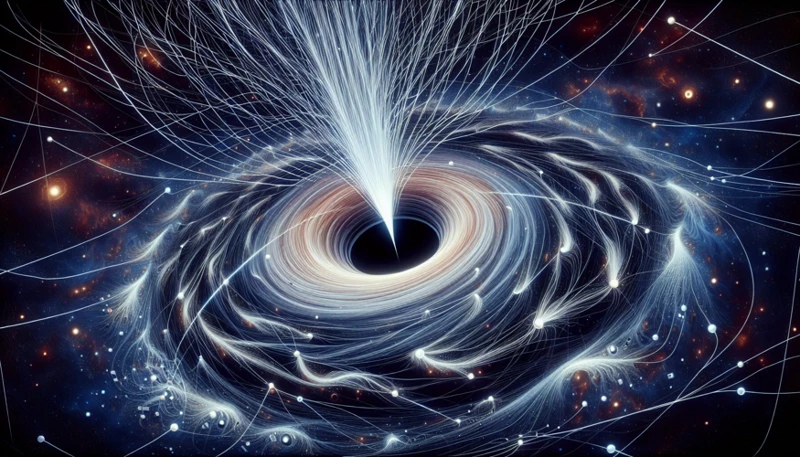
Quantum entanglement plays a pivotal role in shaping our understanding of the universe and its interconnectedness. One intriguing aspect of quantum entanglement is its potential connection to the Big Bang. The rapid expansion of the universe during this cosmic event led to the production of countless entangled particles. These particles, with their intertwined states, are believed to have influenced the formation of cosmic structures and the distribution of matter across the vast expanse of space. The enigmatic nature of entanglement hints at a universe where everything is intricately linked, suggesting a deep interconnection between all particles and systems. Quantum entanglement’s significance is not limited to the macrocosmic scale; at the quantum level, it represents the fundamental fabric of reality and its behavior shapes everything from particle interactions to the emergence of complex phenomena. As we continue to unravel the mysteries of the universe, the role of quantum entanglement in shaping our cosmic existence remains an enigmatic and fascinating subject of study.
Quantum Entanglement and the Big Bang
Quantum entanglement has profound implications for our understanding of the universe and its origins, including the Big Bang. The Big Bang theory suggests that the universe began as an extremely hot and dense state, expanding rapidly and giving rise to the formation of galaxies, stars, and ultimately, life as we know it. Scientists speculate that during this early stage, quantum entanglement played a crucial role in the development of the cosmos. According to theoretical physicist John Preskill, entanglement could have been responsible for ensuring a uniform distribution of matter and energy throughout the expanding universe. This uniformity is crucial for explaining the homogeneity observed in the cosmic microwave background radiation, which provides strong evidence for the Big Bang. Additionally, some researchers propose that entangled particles could have been the fundamental building blocks that allowed matter and the forces of nature to emerge from the primordial soup of the early universe. The entanglement of these particles might have set the stage for the formation of atoms, molecules, and eventually, complex structures. While it is still an area of active research, the connection between quantum entanglement and the Big Bang offers a tantalizing possibility of understanding the very fabric of our universe and its incredible beginnings.
The Quantum World and Interconnectedness
In the mind-bending realm of quantum physics, the concept of interconnectedness takes on a whole new level of meaning. At the heart of the quantum world lies the intriguing phenomenon of quantum entanglement, where particles become inextricably linked regardless of distance. This interconnectedness challenges our traditional understanding of reality and raises profound questions about the nature of the universe. According to quantum physics, particles are not isolated entities but exist in a state of entanglement, where the properties of one particle are intimately connected to the properties of another. This interconnectedness is not limited by distance, as changes made to one particle will instantaneously affect its entangled partner, regardless of the vast distances between them. The implications of this phenomenon are far-reaching, suggesting a fundamental interconnectedness at the most fundamental level of existence. This concept resonates with philosophical and spiritual ideas of interconnectedness found in various cultures and belief systems, such as the Native American mythology surrounding sacred animals. The entangled nature of particles in the quantum world hints at a deeper cosmic web of interrelatedness that connects everything in the universe. Exploring the quantum world and its interconnectedness brings us face to face with the profound mysteries and complexities that lie at the heart of our existence. It challenges our perception of reality, inviting us to contemplate the fundamental interconnectedness that may underlie all aspects of the universe. This interconnectedness may just be the key to unlocking some of the biggest mysteries of our reality and our place within it.
Challenges and Mysteries
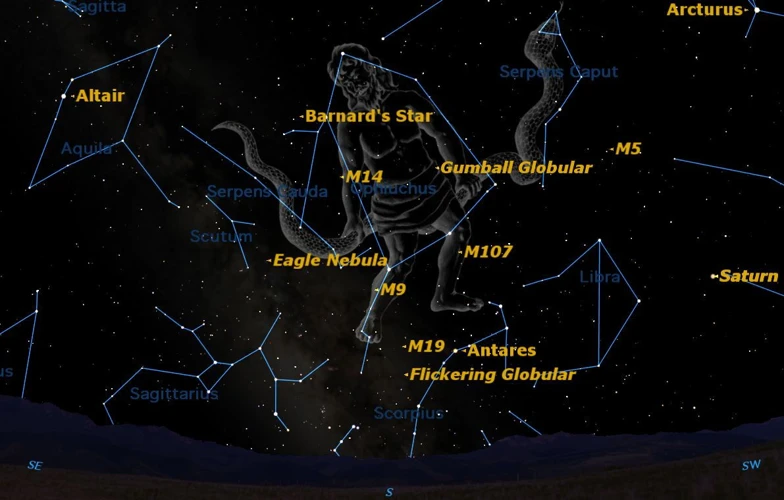
The realm of quantum entanglement is not without its challenges and mysteries. One of the major hurdles that scientists face is the issue of decoherence, which occurs when the delicate entangled state of particles is disrupted by interactions with the environment. This loss of entanglement poses a significant obstacle to harnessing the full potential of quantum computing and communication. Another perplexing aspect is the measurement problem, which raises questions about how and why observing one entangled particle determines the state of its counterpart. Additionally, the concept of quantum entanglement has led to intriguing speculations about the possibility of time travel. While it remains purely speculative at this point, the entanglement of particles across both space and time has sparked discussions about its potential role in traversing temporal dimensions. As scientists continue to unravel the mysteries surrounding quantum entanglement, these challenges serve as exciting avenues for exploration, paving the way for potentially groundbreaking discoveries in the future.
Decoherence and Loss of Entanglement
Decoherence and the loss of entanglement are significant challenges in the field of quantum physics. When particles become entangled, their states become correlated, but this delicate state is easily disrupted by various external factors. Decoherence refers to the interaction of entangled particles with their surrounding environment, causing the entanglement to decay and transform into a classical state. This process occurs due to the particles’ entanglement being sensitive to outside influences, such as temperature, electromagnetic radiation, or interaction with other particles. As a result, the fragile quantum states collapse, and the entangled particles lose their correlation. Decoherence poses a major obstacle to harnessing the potential of quantum entanglement for practical applications, particularly in quantum computing and secure communication. Scientists are actively researching methods to minimize decoherence or develop techniques to combat its effects, such as quantum error correction codes. Understanding and overcoming the challenges of decoherence is crucial for the advancement and utilization of quantum entanglement in various fields. With further research and technological developments, scientists hope to mitigate the impact of decoherence and unlock the full potential of quantum entanglement’s capabilities.
The Measurement Problem
The Measurement Problem in quantum entanglement is a perplexing and fundamental issue that arises when observing and measuring entangled particles. According to the principles of quantum mechanics, particles exist in a superposition of states until they are observed or measured. However, once a measurement is made, the wave function collapses, and the particle assumes a definite value. The Measurement Problem arises from the question of how and why this collapse occurs, as well as the implications it has on the nature of reality and the observer’s role in the measurement process. One possible interpretation is the Copenhagen interpretation, which suggests that the act of measurement triggers the collapse. However, this interpretation has been the subject of debate and scrutiny, with alternative theories like the Many-Worlds interpretation proposing that every possible outcome exists in parallel universes. Another proposed solution is the Decoherence theory, which states that interactions with the environment cause the collapse of the wave function. The Measurement Problem is a fundamental challenge that scientists and physicists continue to grapple with as they seek to unravel the mysteries of the quantum world. It raises profound philosophical questions about the nature of reality and our place in the universe.
Quantum Entanglement and Time Travel
Quantum entanglement has long intrigued scientists and has even sparked speculation about its potential connection to time travel. While the concept of time travel remains largely in the realm of science fiction, some physicists have explored the idea of using quantum entanglement to manipulate time in theory. Theoretically, if we can entangle particles and send one into the future while the other remains in the present, it could result in a scenario where information is transmitted faster than the speed of light, potentially violating causality. However, it’s important to note that the idea of using entanglement for time travel is purely speculative at this point, and there are several challenges and limitations that need to be overcome. One major hurdle is the preservation of entanglement over long distances and time scales, as external factors can easily disrupt or break the entangled state. Additionally, the very nature of time travel and the paradoxes it presents raise deep philosophical and scientific questions that have yet to be fully answered. So, while the idea of quantum entanglement and time travel may be intriguing, it remains firmly in the realm of speculation and scientific exploration.
The Future of Quantum Entanglement
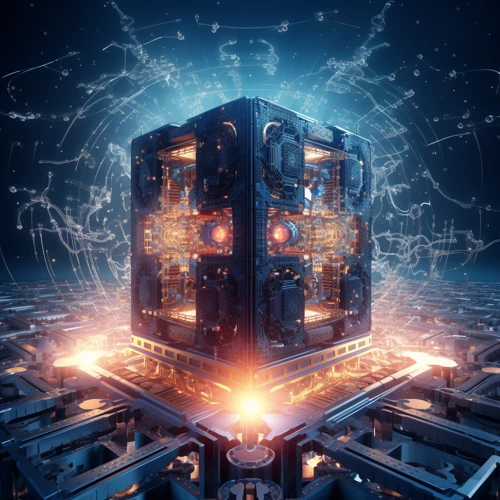
The future of quantum entanglement holds immense promise and potential for scientific advancements and technological breakthroughs. As researchers continue to unravel the mysteries of this bizarre phenomenon, we can expect to witness significant strides in experimental techniques that will allow for even more precise control and manipulation of entangled particles. These advancements will pave the way for the development of practical applications that harness the power of quantum entanglement. One exciting area of exploration is quantum computing, where the unique properties of entanglement can exponentially enhance computational speed and capabilities. Quantum communication networks could also become a reality, enabling secure and unbreakable encrypted communication over long distances. The future may even see the integration of quantum entanglement into various fields, such as medicine, materials science, and space exploration. With each new discovery and innovation, we delve deeper into the enigmatic world of quantum entanglement, opening doors to possibilities that were once confined to the realms of science fiction.
Advancements in Experimental Techniques
Advancements in experimental techniques have been instrumental in pushing the boundaries of our understanding of quantum entanglement. Scientists and researchers are constantly developing new methods and technologies to observe, control, and manipulate entangled particles with increasing precision. One such advancement is the use of quantum optics, where researchers harness the properties of light to study entanglement. Techniques like photon entanglement, where pairs of entangled photons are generated, have allowed scientists to investigate the fundamental principles of entanglement and develop practical applications such as quantum communication. Another breakthrough is the development of ultracold atomic systems and trapped ion technologies. These techniques involve cooling atoms to ultra-low temperatures and confining them using electromagnetic fields. By doing so, researchers can isolate and manipulate individual atoms or ions in a controlled manner, allowing for the creation and study of highly entangled states. These advancements in experimental techniques have not only deepened our understanding of quantum entanglement but also paved the way for potential applications in quantum computing, quantum teleportation, and secure communication systems. As researchers continue to refine and innovate these experimental techniques, we can expect even more profound insights into the strange and fascinating world of quantum entanglement.
Practical Applications on the Horizon
Practical applications of quantum entanglement are continuously emerging on the horizon, promising revolutionary advancements in various fields. One area of research where quantum entanglement shows great promise is in the realm of quantum computing. The inherent ability of entangled particles to exist in multiple states simultaneously, known as superposition, allows for the creation of quantum bits or qubits. These qubits can store and process exponentially more information than classical bits, potentially leading to incredibly powerful computers capable of solving complex problems with unparalleled efficiency. Quantum computers could revolutionize fields such as cryptography, optimization, and drug discovery, unlocking new frontiers in scientific research and technological development.
Another exciting application of quantum entanglement is in the field of secure communication. The phenomenon of entanglement allows for the creation of unbreakable encryption protocols, where the act of eavesdropping or tampering with the communication will be immediately detected. By using entangled particles to exchange cryptographic keys, any interference with the entangled particles will disrupt their delicate quantum state, providing a secure channel for transmitting sensitive information. This has significant implications for industries such as finance, defense, and telecommunications, where secure communication is of utmost importance.
Quantum entanglement has the potential to revolutionize sensing and metrology. By utilizing entangled particles, researchers can create incredibly precise measurement devices, surpassing the limitations of classical sensors. For example, quantum entanglement could be used to enhance the sensitivity of gravitational wave detectors, enabling scientists to detect faint ripples in the fabric of spacetime with greater accuracy. Additionally, entanglement-based sensors could be utilized in fields such as navigation, magnetic field detection, and imaging, pushing the boundaries of our ability to observe and understand the world around us.
As researchers continue to explore and harness the power of quantum entanglement, the practical applications on the horizon appear to be limitless. From quantum computing and secure communication to sensing and metrology, the potential impact of quantum entanglement on various industries and scientific disciplines is both exciting and profound. While many of these applications are still in the experimental stage, the rapid progress and advancements in quantum technology hint at a future where the capabilities offered by entanglement become an integral part of our everyday lives.
Conclusion

In conclusion, quantum entanglement remains one of the most intriguing and puzzling phenomena in the realm of physics. Its ability to connect particles across vast distances with seemingly instantaneous communication challenges our conventional understanding of reality. Quantum entanglement has not only revolutionized fields like quantum computing and secure communication, but it has also deepened our understanding of the interconnectedness of the universe. The implications of entanglement extend beyond the boundaries of our current knowledge, raising questions about the fundamental nature of space, time, and the fabric of reality itself. As advancements in experimental techniques continue to unravel the mysteries of quantum entanglement, exciting possibilities lie on the horizon. From advancements in teleportation and cryptography to potential applications in fields such as medicine and energy, the future holds great promise. While challenges like decoherence and the measurement problem persist, the study of quantum entanglement offers a glimpse into a future that is both perplexing and awe-inspiring. As our understanding of this strange phenomenon deepens, so too does our appreciation for the infinite complexities of the universe. The exploration of quantum entanglement is an ongoing journey, offering tantalizing glimpses into the weird and wonderful workings of the quantum world. It reminds us that the universe is far more mysterious and interconnected than we can possibly imagine.
Note: If you’re interested in mythical creatures and their significance across various cultures, you may enjoy exploring the symbolism of dragons in Native American mythology. These legendary beings have played important roles in the myths and legends of many different cultures, including the famous dragons of Olympian mythology.
Frequently Asked Questions

What is quantum entanglement?
Quantum entanglement refers to the phenomenon where particles become linked together in such a way that their states are dependent on each other, regardless of the distance between them.
How does quantum entanglement work?
Quantum entanglement occurs when two or more particles interact and become entangled. This entanglement results in a correlation between their states, meaning that changing the state of one particle will instantaneously affect the state of its entangled partner, regardless of the physical distance between them.
Can quantum entanglement be explained by classical physics?
No, quantum entanglement is a purely quantum mechanical phenomenon that cannot be explained by classical physics. It exists due to the principles of quantum mechanics, which include concepts like superposition and wave-particle duality.
What are the applications of quantum entanglement?
Quantum entanglement has various applications, such as in quantum computing, where the entanglement of qubits allows for advanced computational capabilities. It also plays a crucial role in secure communication methods like quantum cryptography, enabling the transmission of information with unparalleled security.
Can entanglement be used for faster-than-light communication?
No, entanglement does not allow for faster-than-light communication. While changes made to one entangled particle have an immediate effect on the other, this effect cannot be used to transmit information faster than the speed of light.
The measurement problem in quantum mechanics refers to the issue of understanding how the act of measurement causes the collapse of a particle’s wave function into a definite state. Quantum entanglement further complicates this problem as the state of an entangled particle is tied to the state of another, raising questions about how measurements affect each respective particle.
Although quantum entanglement may appear to have some connection to time travel due to its instantaneous effects, it does not provide a means for time travel. The entanglement of particles does not allow for the transmission of information or objects into the past or future.
Can quantum entanglement be lost?
Yes, quantum entanglement can be lost due to a phenomenon called decoherence. When entangled particles interact with their surrounding environment, their entanglement can gradually deteriorate, leading to a loss of the correlation between their states.
Does quantum entanglement have any role in the origins of the universe?
Quantum entanglement is theorized to have played a role in the early moments of the universe during the Big Bang. It is suggested that entanglement might have contributed to the emergence of the universe’s structure and distribution of matter.
What advancements are being made in experimental techniques for studying quantum entanglement?
Scientists are continually developing new experimental techniques to study and harness quantum entanglement. This includes advancements in the manipulation and control of individual particles, as well as improvements in measurement and detection methods to better understand the behavior and applications of entangled systems.
References
- The Weird, But True, Evidence for ‘Spooky Action’ at Distance
- Weird! Quantum Entanglement Can Reach into the Past
Frequently Asked Questions

How does quantum entanglement work?
Quantum entanglement occurs when two or more particles become correlated in such a way that their states are dependent on each other. This means that the behavior of one particle directly affects the behavior of the other, no matter how far apart they are.
Is quantum entanglement a real phenomenon?
Yes, quantum entanglement is a well-documented and observed phenomenon in quantum physics. It has been tested and demonstrated in numerous experiments.
What is the significance of quantum entanglement?
Quantum entanglement is significant because it challenges our classical understanding of reality. It has important implications for fields such as quantum computing, secure communication, and our understanding of the fundamental nature of the universe.
Can quantum entanglement be explained by classical physics?
No, quantum entanglement cannot be explained by classical physics. It is a phenomenon that can only be understood within the framework of quantum mechanics, which is a branch of physics that deals with the behavior of particles at the quantum level.
Are there any practical applications of quantum entanglement?
Yes, quantum entanglement has potential applications in various fields. For example, it could be used in quantum computing to perform complex calculations more efficiently, and in secure communication to transmit information securely.
What is the relationship between quantum entanglement and quantum teleportation?
Quantum teleportation relies on quantum entanglement to transfer the state of one particle to another, even if they are physically separated. It is a process that utilizes the properties of entangled particles to transmit information.
Is it possible to use quantum entanglement for time travel?
While quantum entanglement is a fascinating phenomenon, it does not provide a means for time travel. The concept of using entanglement for time travel remains speculative and has not been supported by scientific evidence.
What is decoherence and how does it affect quantum entanglement?
Decoherence refers to the process by which quantum systems lose their quantum properties and start behaving classically. It can disrupt and break the entanglement between particles, making it challenging to maintain and manipulate entangled states.
Can quantum entanglement be used to communicate faster than the speed of light?
No, quantum entanglement does not allow for faster-than-light communication. While the states of entangled particles are correlated, information cannot be transmitted between them instantaneously. The speed of light still remains the ultimate speed limit in the universe.
What are some open questions and mysteries surrounding quantum entanglement?
There are still many open questions surrounding quantum entanglement. For example, the nature of the measurement problem in quantum mechanics and the relationship between entanglement and gravity are areas of active research and ongoing debate in the field of physics.

